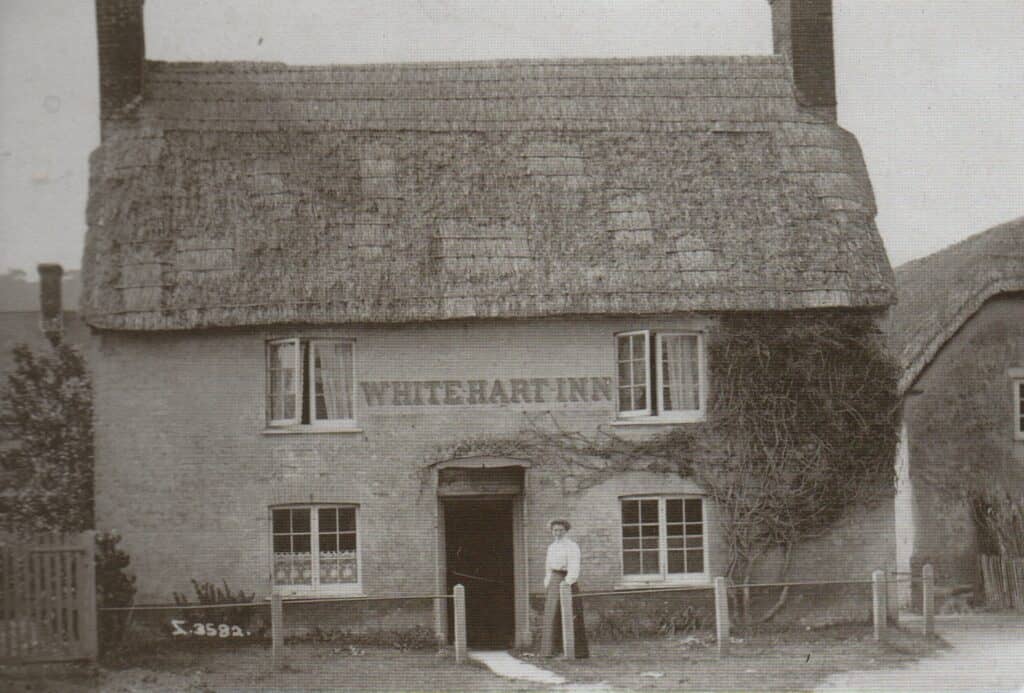Pubs in previous centuries staged a wild variety of events to draw in customers – but they weren’t quite the same as today’s quiz nights and ‘open mic’ sessions, explains Roger Guttridge.

on Barry Cuff ’s postcard collection
If you think Shroton’s village pub looks markedly different from its forebear, you’d be right – and there’s a good reason for that. The Cricketers of today was built a century ago after the thatched White Hart that stood on the same site was burnt down.
The fire was in 1920 but the White Hart name survived until the 1990s when it was changed to celebrate
the pub’s long association with Shroton Cricket Club, founded in 1857. The pub’s own origins are lost in the mists of time.
Village historian Judith Hewitt tells me the earliest record of a pub in Shroton dates from before 1715, when victualler Edward New paid £10 for his liquor licence. It’s not clear where Mr New’s premises were.
In 1759 victualler John Goddard kept a pub at ‘the sign of a Bush’. The Bush was renamed the White Hart the following year.
Goddard’s name appears again in 1807, when the White Hart hosted a major auction of timber comprising ‘100 prime maiden oaks, with lops and bark’ and ‘21 ashes’, all standing at Shroton Farm.
Gory list of attractions
The White Hart also hosted cock- fighting in 1799, with the Salisbury and Winchester Journal advertising
‘a main of cocks to be fought, 15 on each side’.
The prizes were ‘10 guineas a battle’ and ‘50 guineas the odd battle’.
On Boxing Day 1889, a pigeon shooting competition was held at the White Hart with a sweepstake for ‘valuable prizes’. Tickets cost five shillings and ‘conveyances’ were organised to meet trains at Shillingstone
station with a fare of one shilling.
For much of the 19th century the pub was associated with the Andrews family and Shroton Brewery, who rented it from the Pitt Rivers Estate.
In 1918 the Estate, anticipating death duties, offered the pub for sale and it was bought by Blandford brewers Hall & Woodhouse for £750.

The sale was held at the Swan in Sturminster Newton and the catalogue describes the building as ‘brick-built with a thatched roof and fronted by a small lawn and open green beyond, extending to the main highway’.
The green is now the car park. Facilities in 1918 included a bar, smoking room, taproom, large living room, large cellars, three bedrooms, lobby, attic bedroom, long clubroom and a long room that doubled as a skittle alley and trap house.
The outbuildings included a two- room former brewhouse and a four-stall stable. The landlord at the time was Joseph Crew, who paid an annual rent of £45 and whose wife or sister appear in the early 1900s picture above.
During the 19th century the clubroom and long room hosted coroner’s inquests, the cricket club AGM, political meetings and Christmas dinners for village organisations.
by Roger Guttridge



